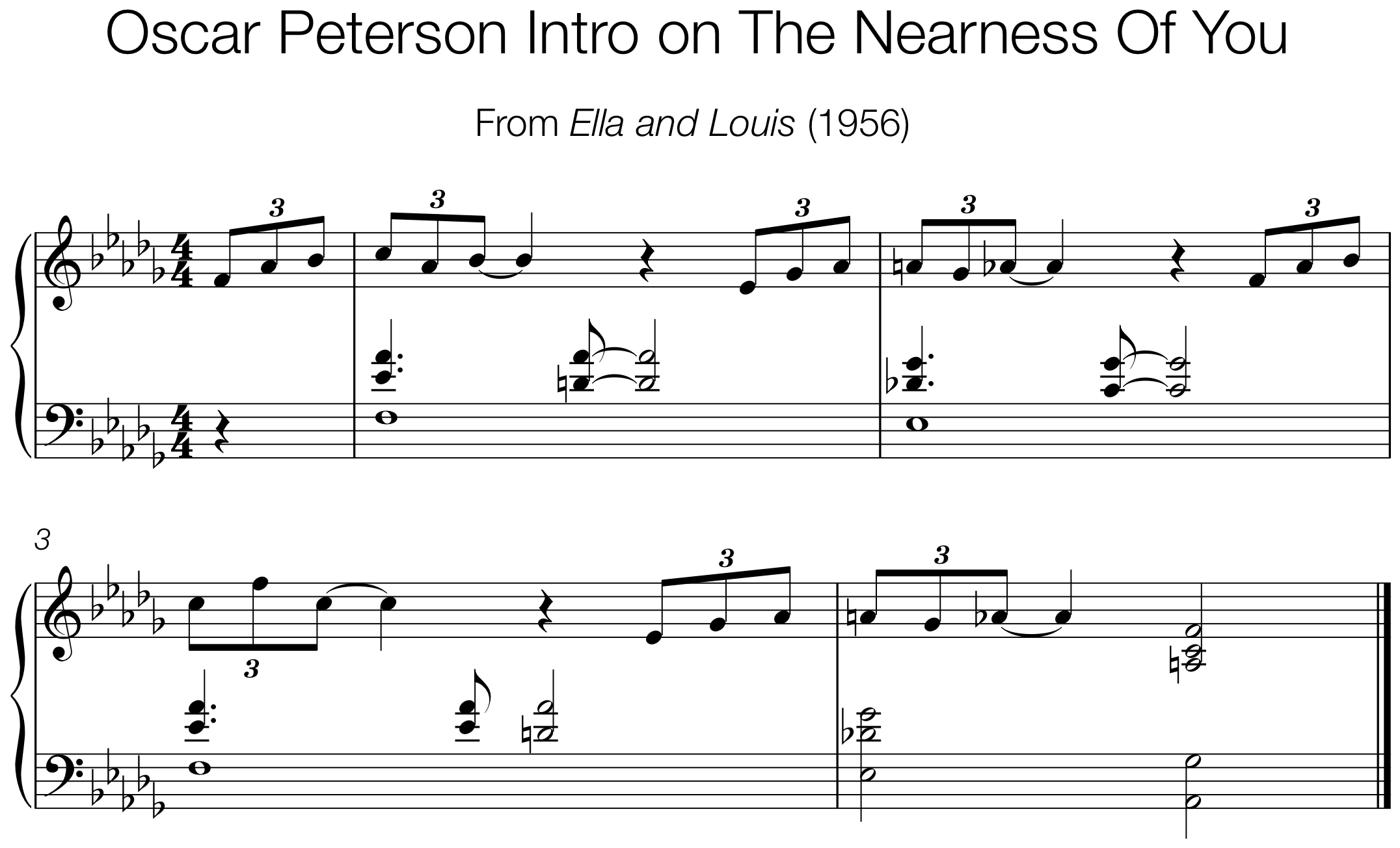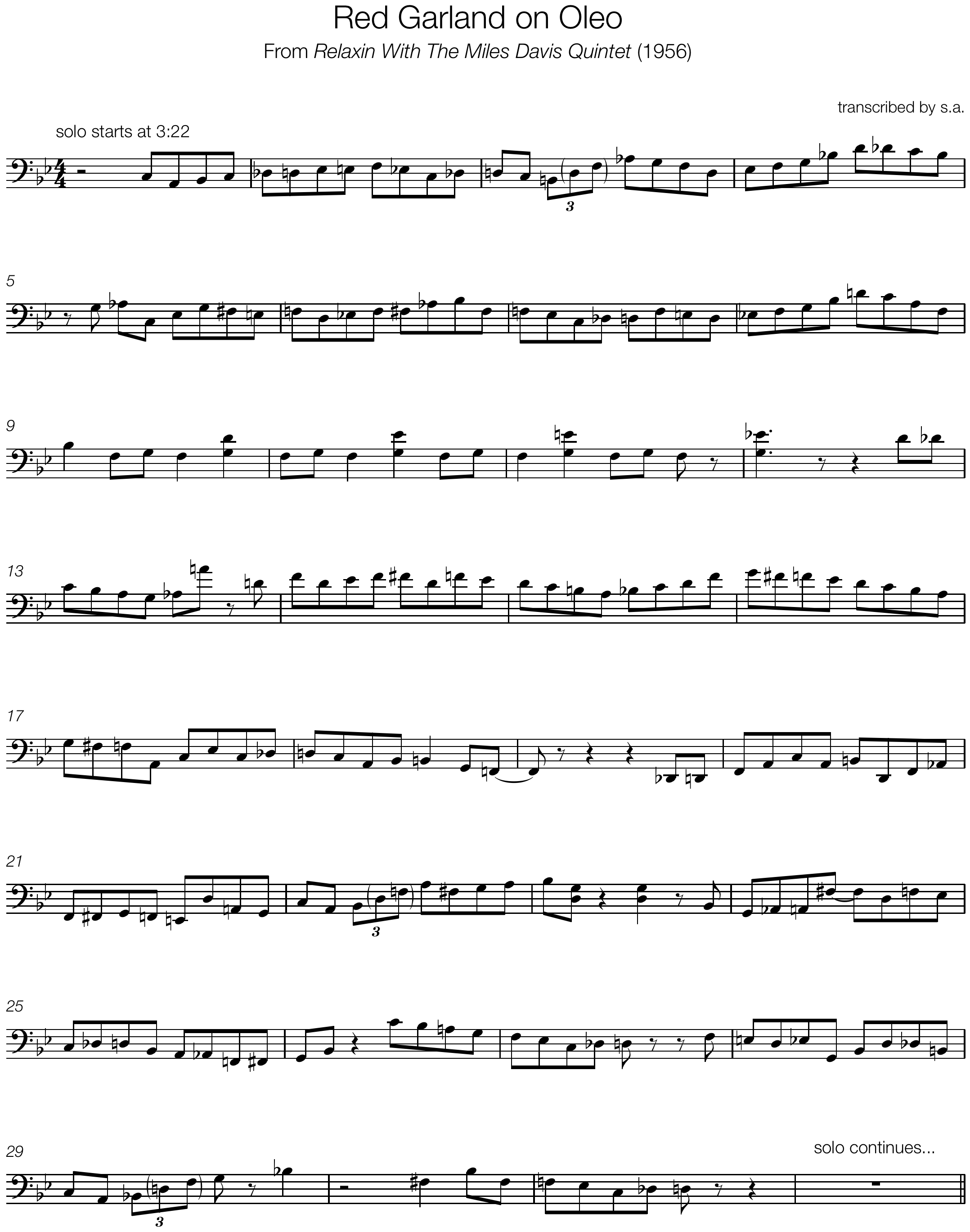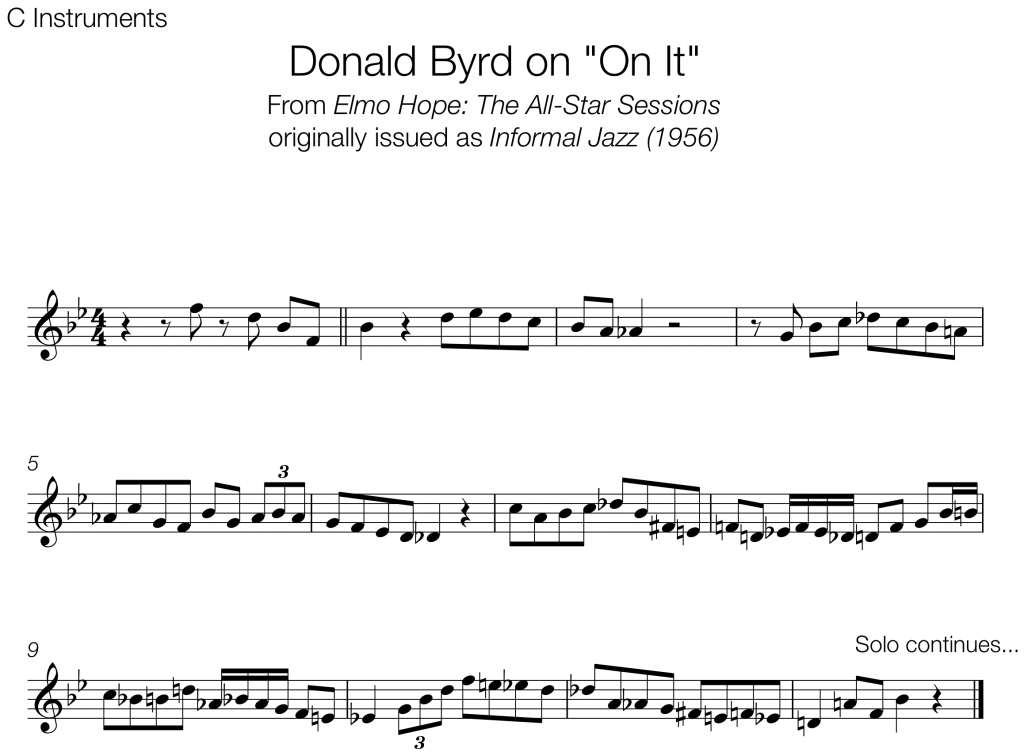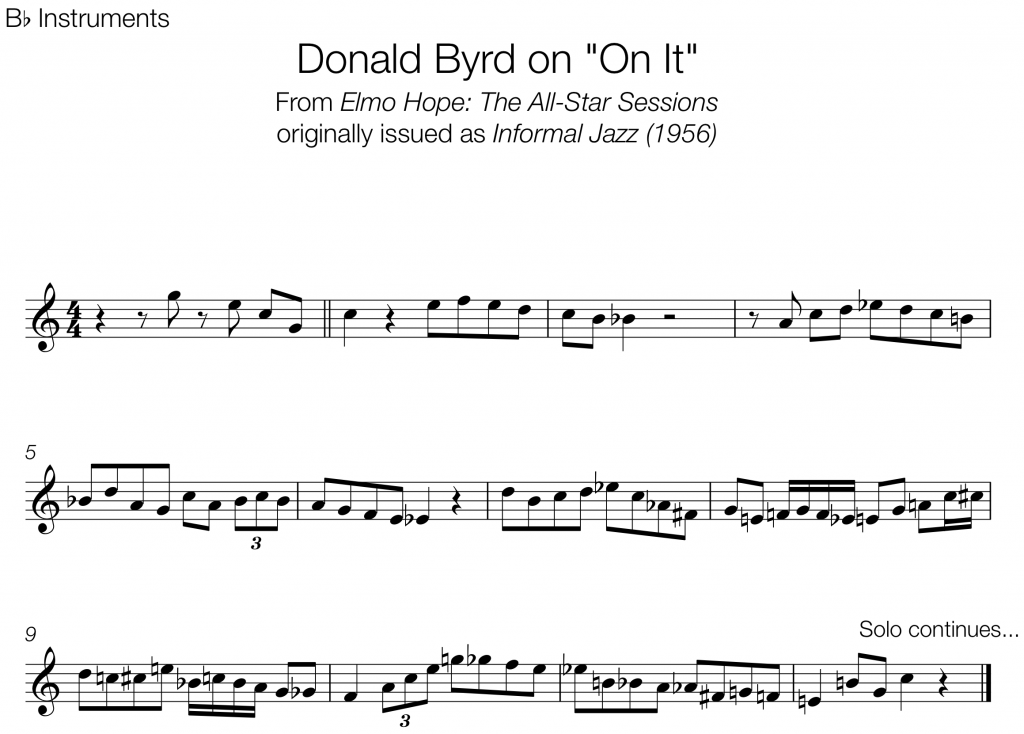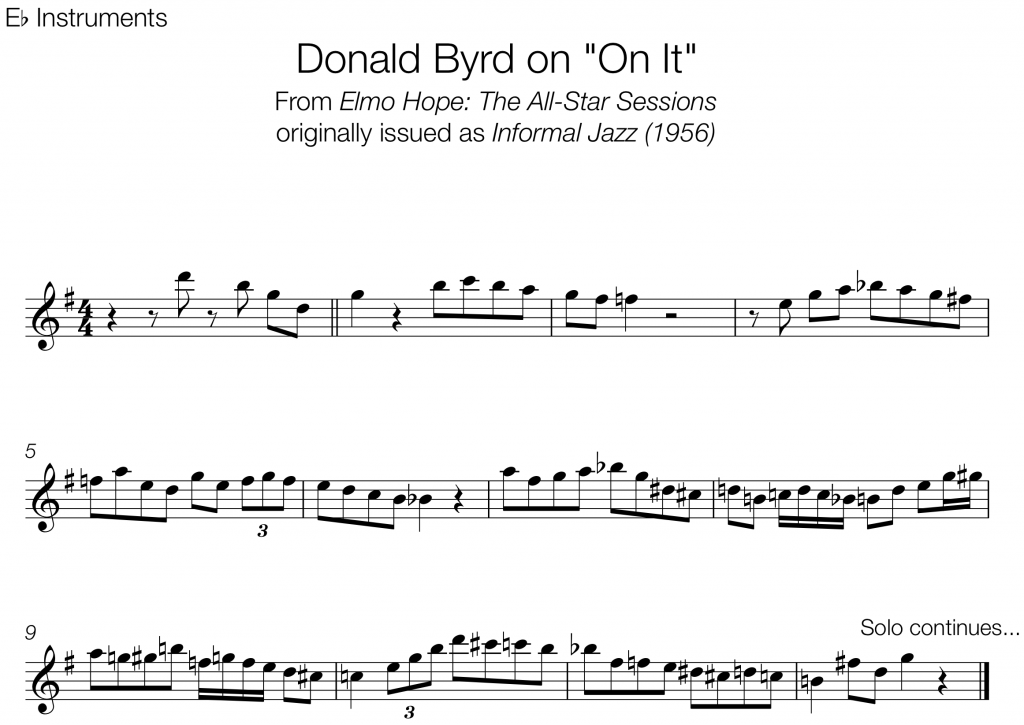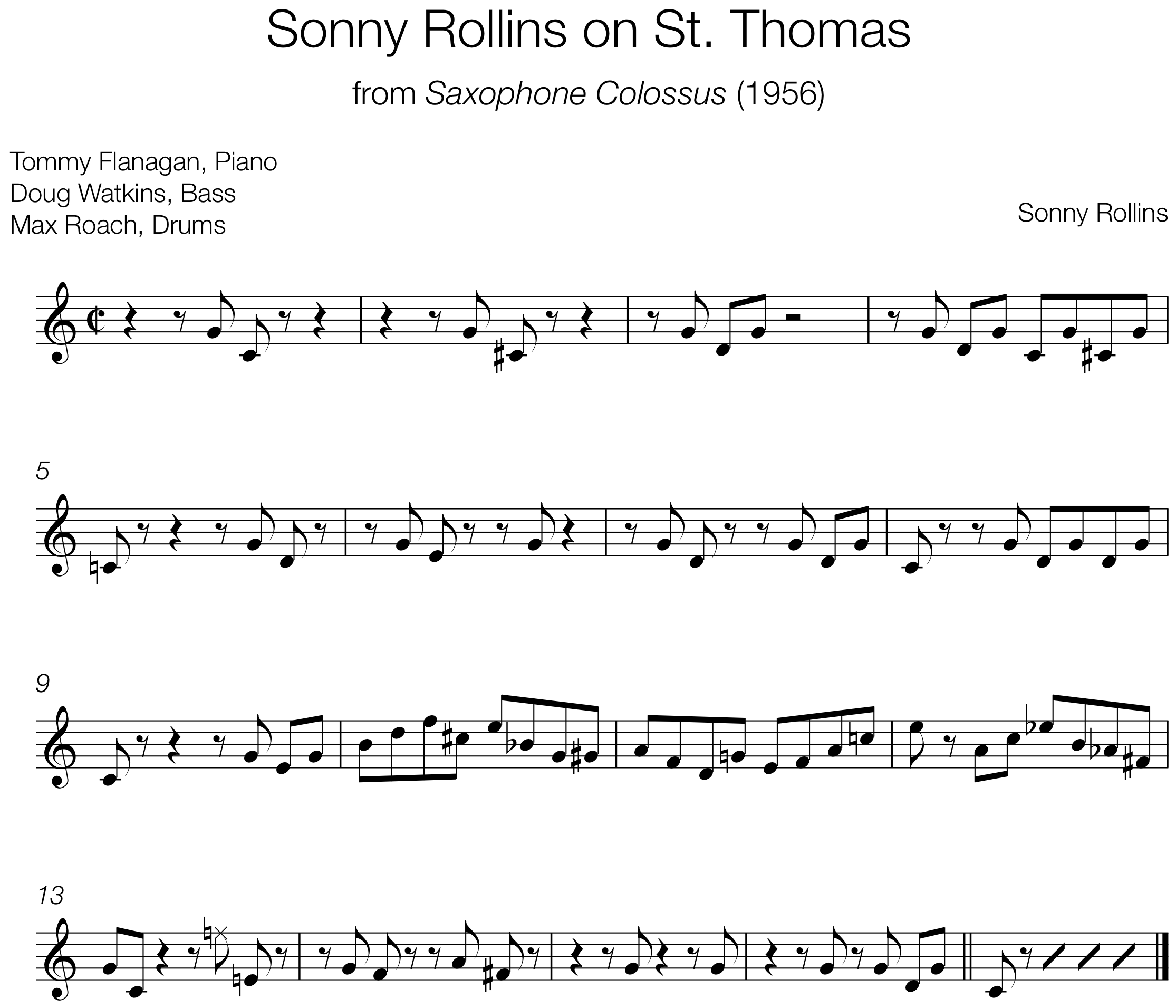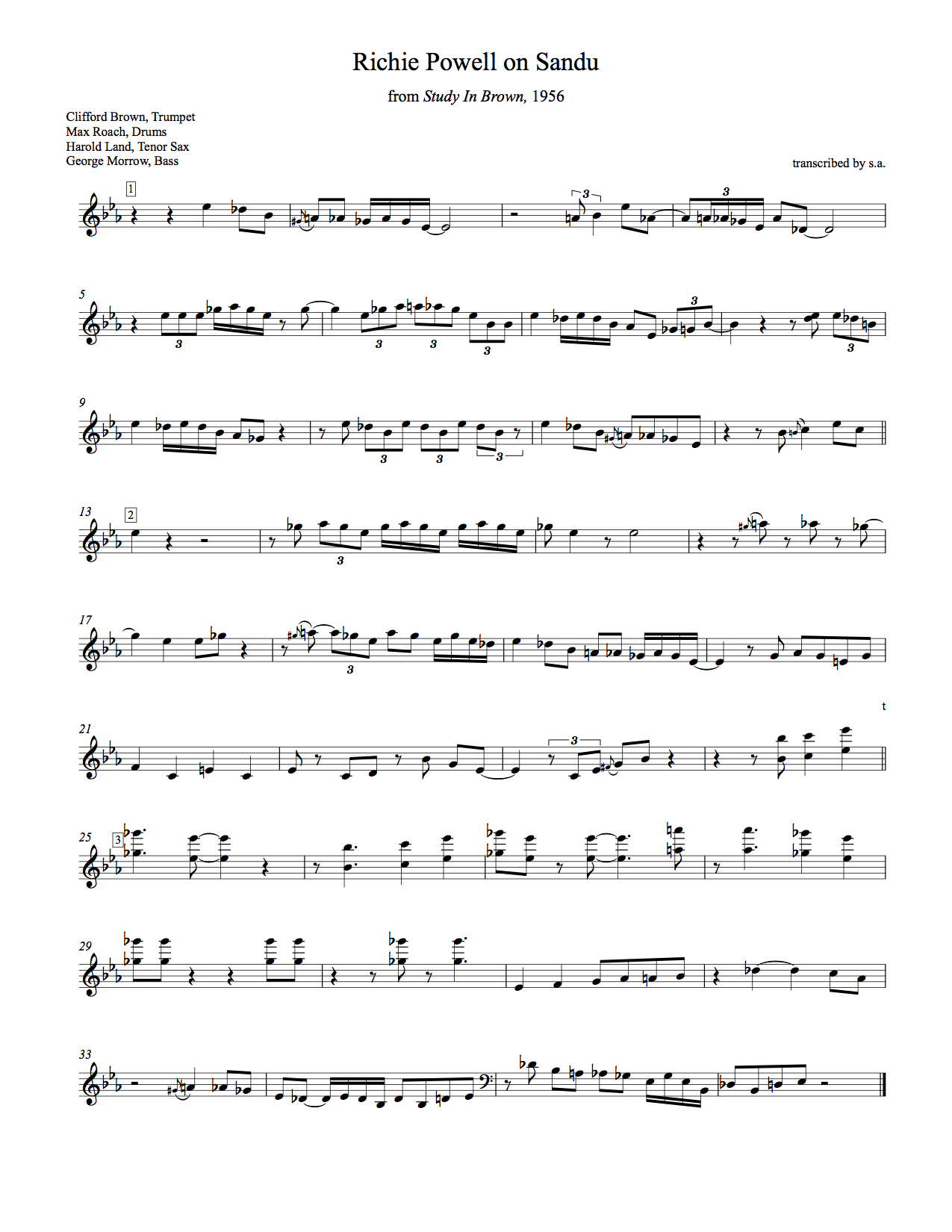Today’s intro comes from the classic album Ella and Louis (1956). The rhythm section on the album is Oscar Peterson’s quartet from that era with Ray Brown on bass, Herb Ellis on guitar, and Buddy Rich on drums.
When I think of Oscar, I often think of his astonishing technique or his bluesy vocabulary. This intro showcases another of his strengths: deep swinging lyricism.
I love that you can hear his foot tapping out the quarter note as he plays. The quiet quarter note pulse set against Peterson’s triplet syncopation makes this a textbook example of a medium-slow swing feel.
